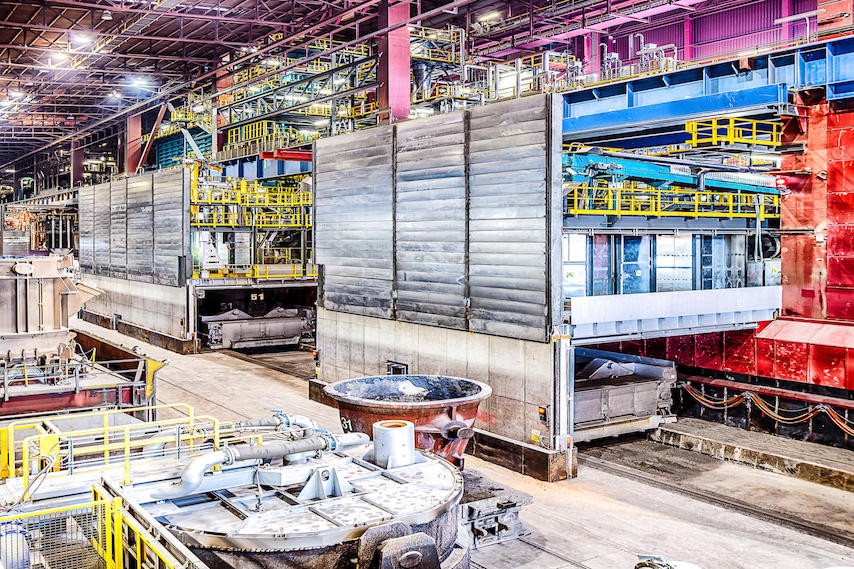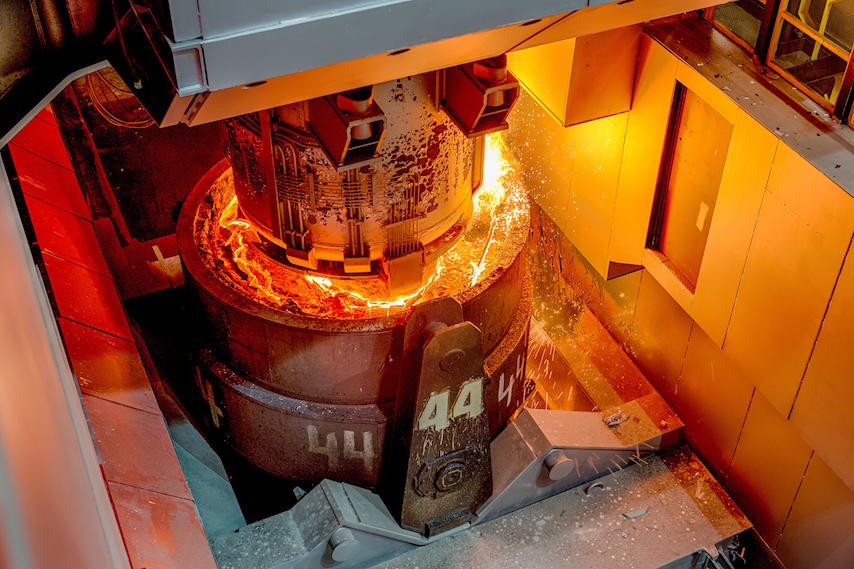The future of production
New voestalpine plants in the field of secondary metallurgy and continuous casting
Progress knows no speed limits. This applies particularly to new flat steel products in meeting customer needs in the automotive industry. In order to be able to offer these state-of-the-art steels in the top quality and quantity required by voestalpine, the company has invested in new facilities in the field of secondary metallurgy and continuous casting. This will keep Europe's most modern steelworks in the fast lane. With an investment of approximately €180 million, roughly 75% of the crude steel produced at voestalpine can be treated in state-of-the-art ladle furnaces and vacuum systems and cast in the most modern continuous casting lines.
Secondary metallurgy
Experience, expertise, perfect interaction between the actors and a good portion of innovative spirit have been important in the creation of Secondary Metallurgy 4 with state-of-the-art technologies. The plant consists of a vacuum degassing system, a ladle furnace and a conditioning stand These three systems make it uniquely possible to precisely adjust the desired chemical composition at the optimum temperature.
The logistics challenge of implementation was not insignificant: “How do you build a new production system in a fully operational steel works without noticing any drop in output?" The meticulous planning from infrastructure to energy supply has taken this into full account.


Continuous casting line
In the plant known as CC8 (Continuous Casting Line 8), liquid steel is cast into a strand and cut into slabs once it has solidified. These slabs are rolled into steel strips.
In order to meet the demands placed on modern ultra-high-strength steels for lightweight automotive design and on the properties of the finished slabs—such as minimum amounts of inclusions—the plant was equipped with electromagnetic devices to control the flow of liquid steel and its solidification. The installation of a state-of-the-art cooling system, which permits high-precision cooling along the entire length of the strip, enables perfect steel production conditions across the entire range of possible strip widths (final width of the strip up to 1750 mm).
